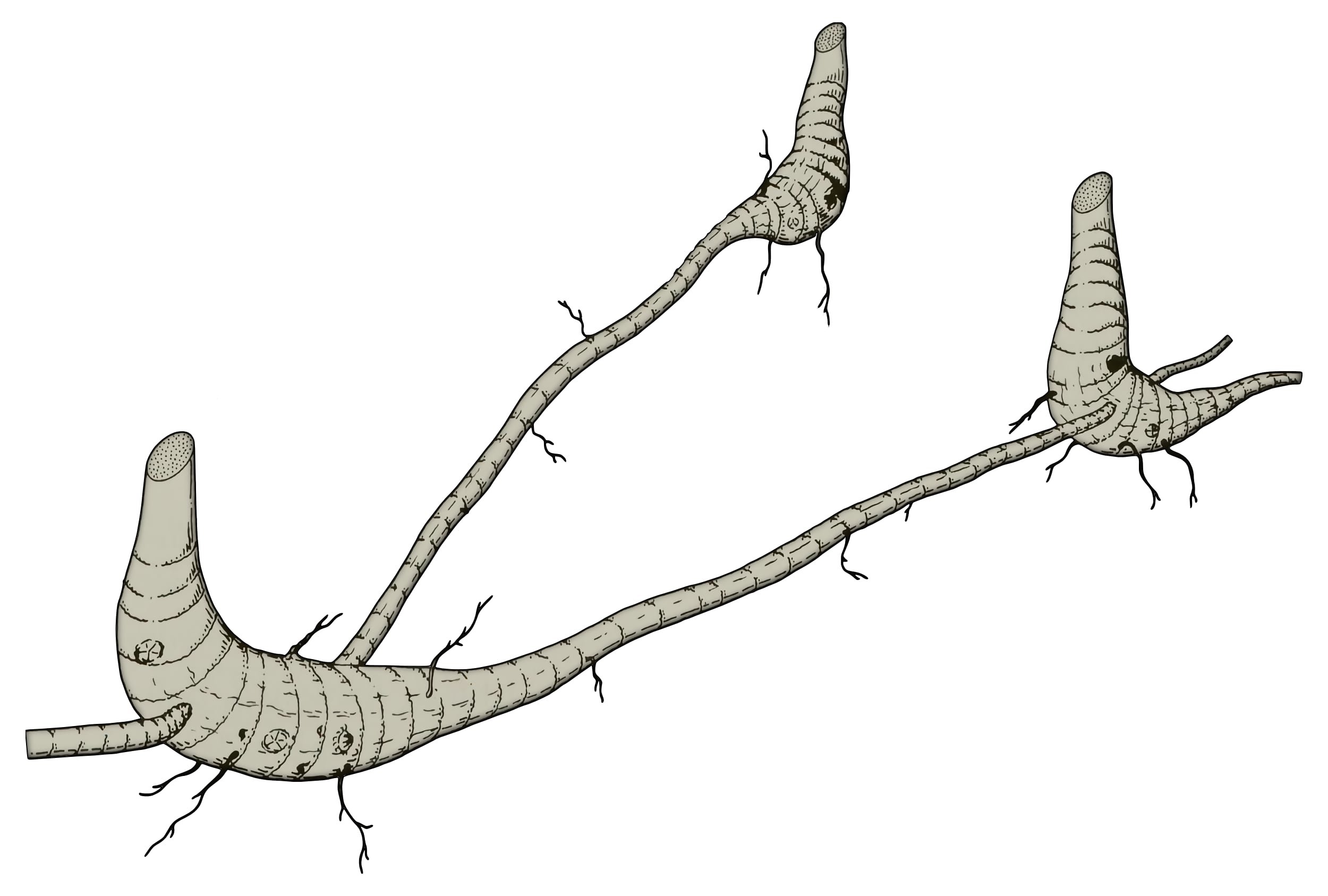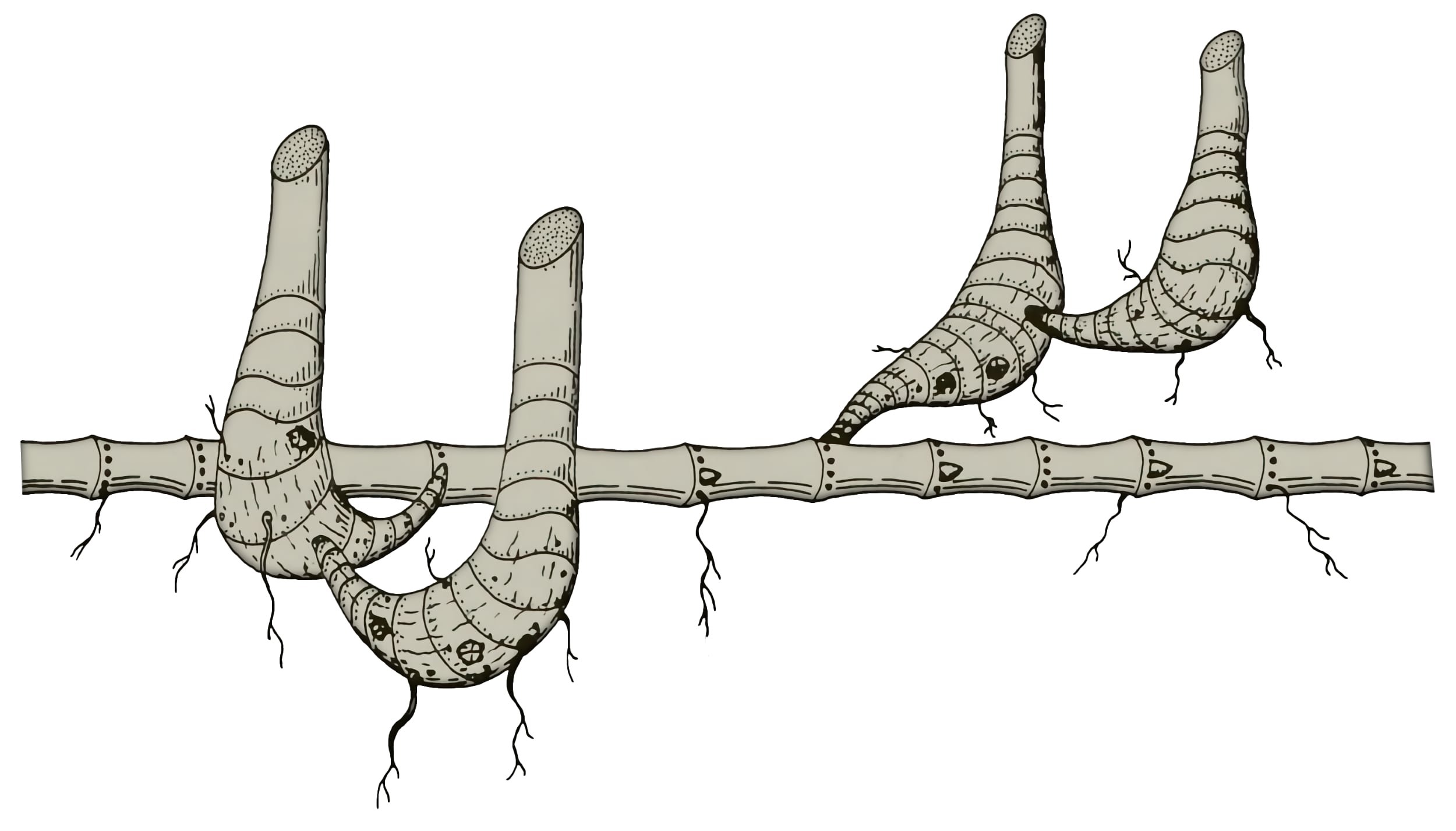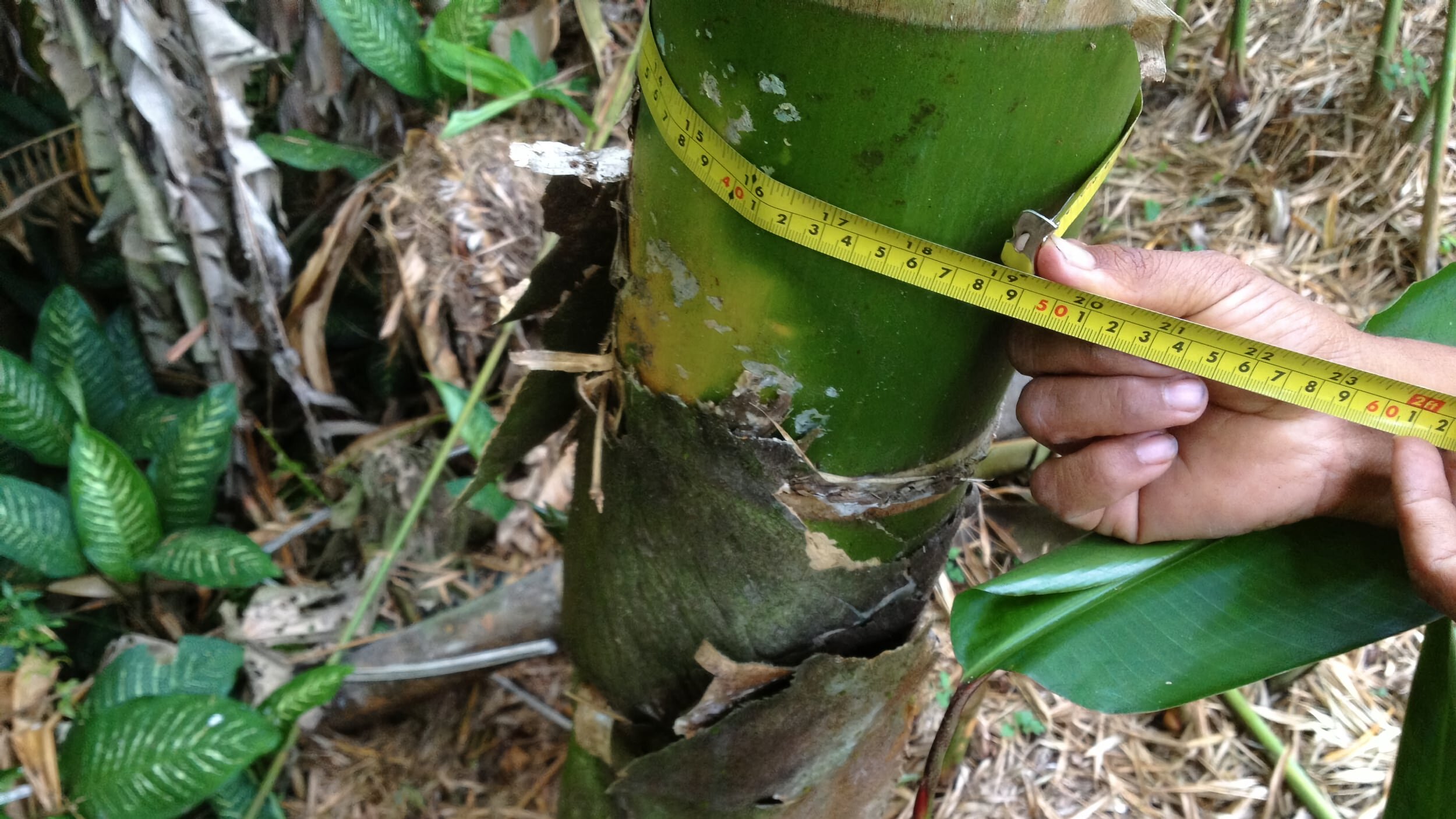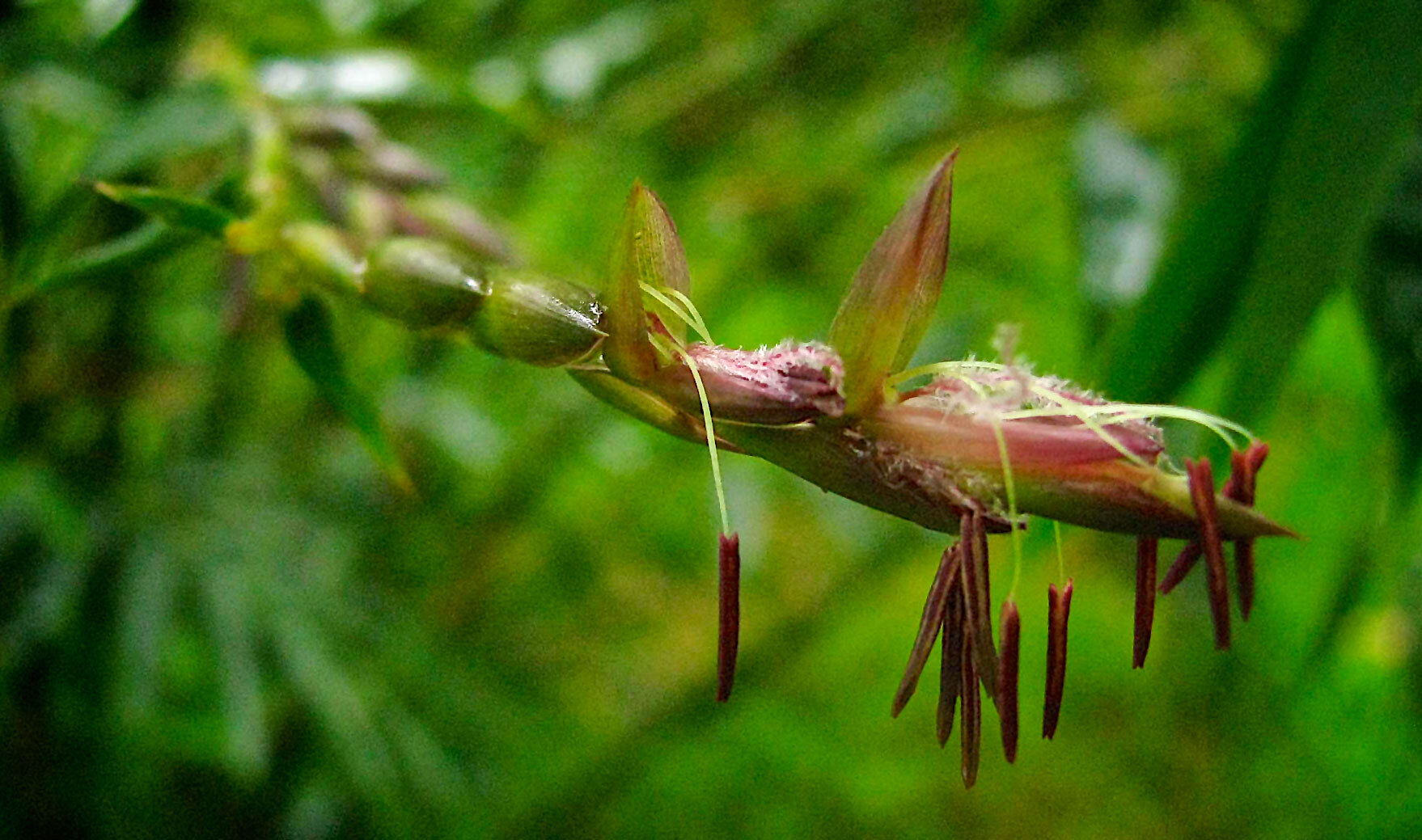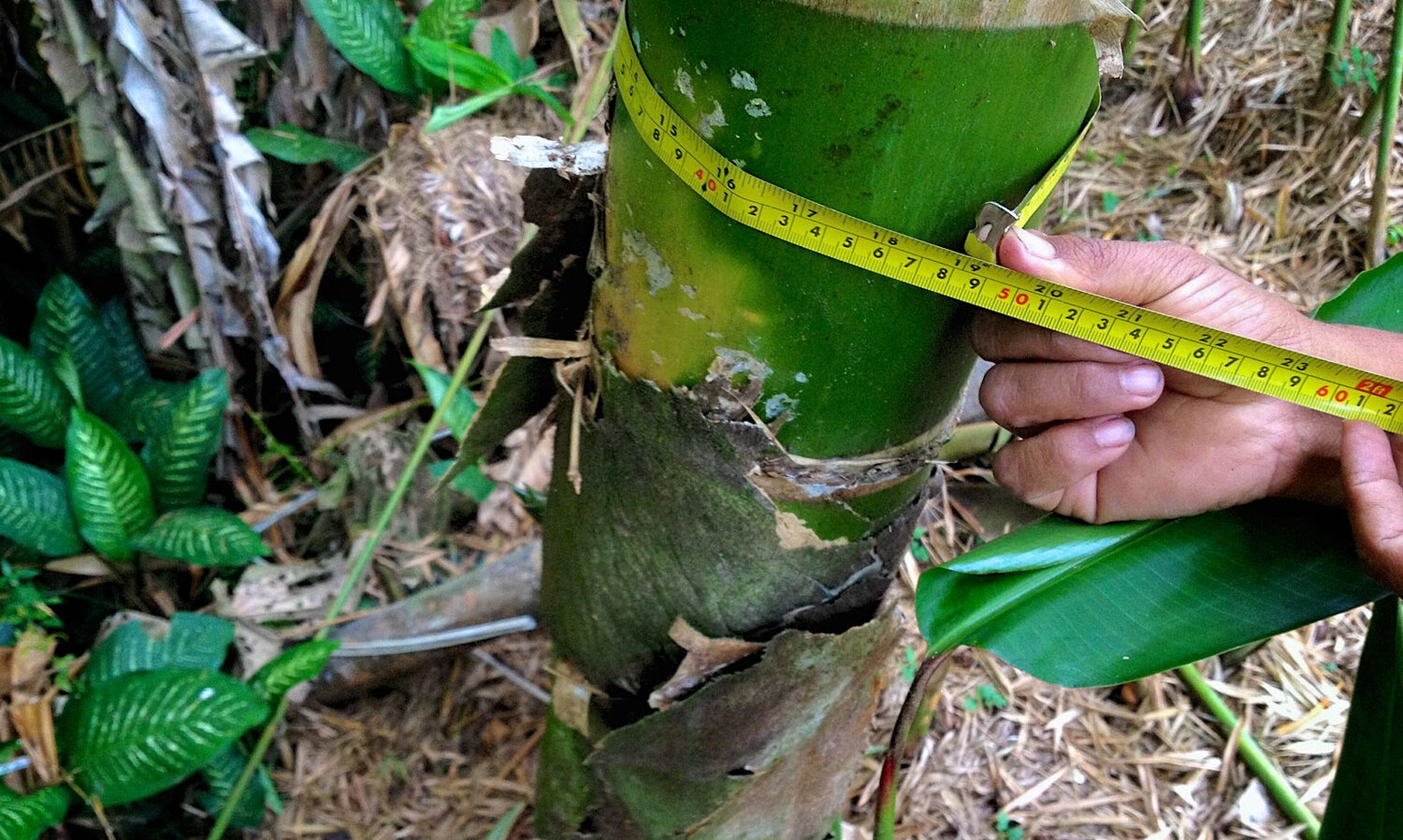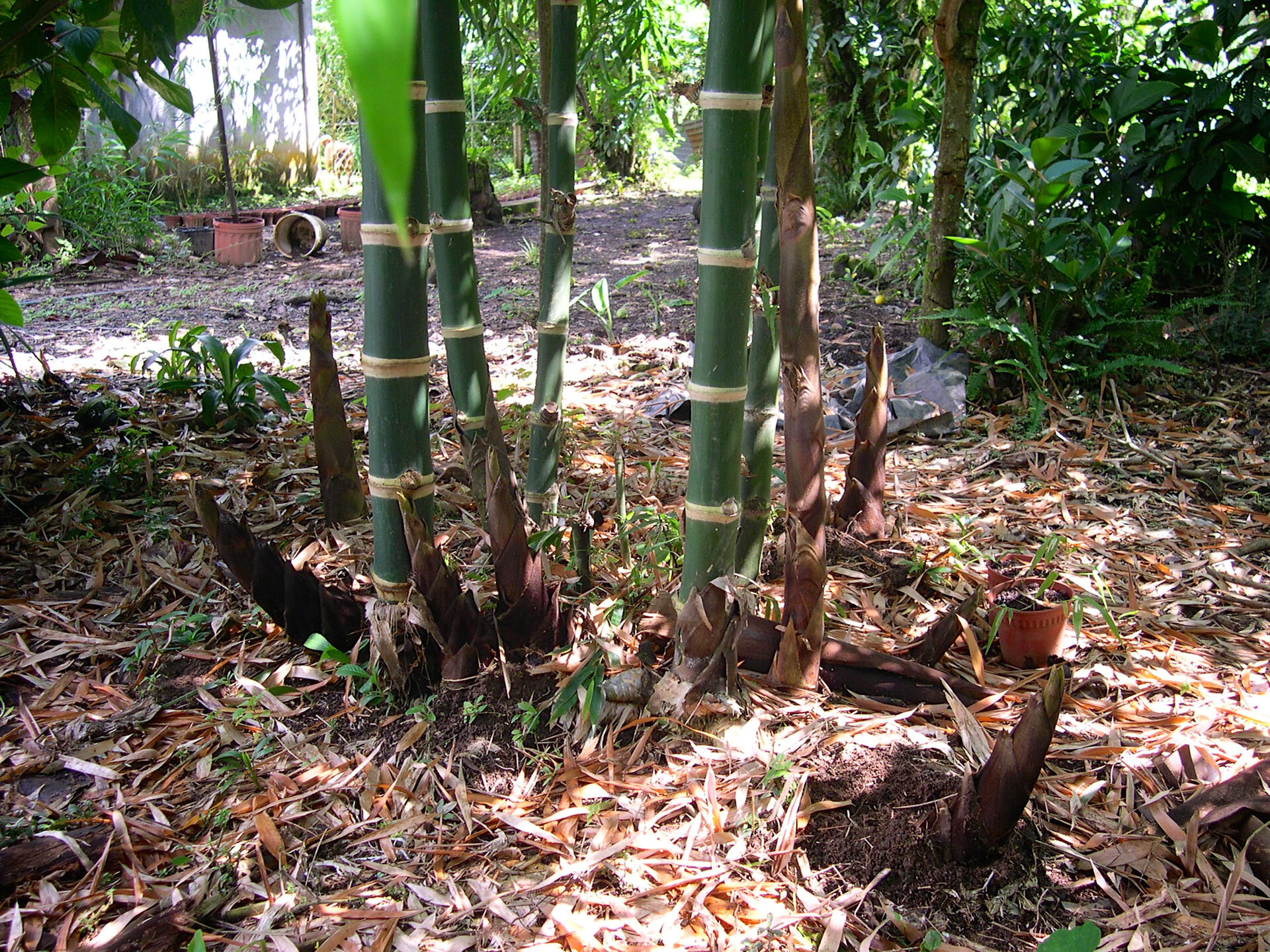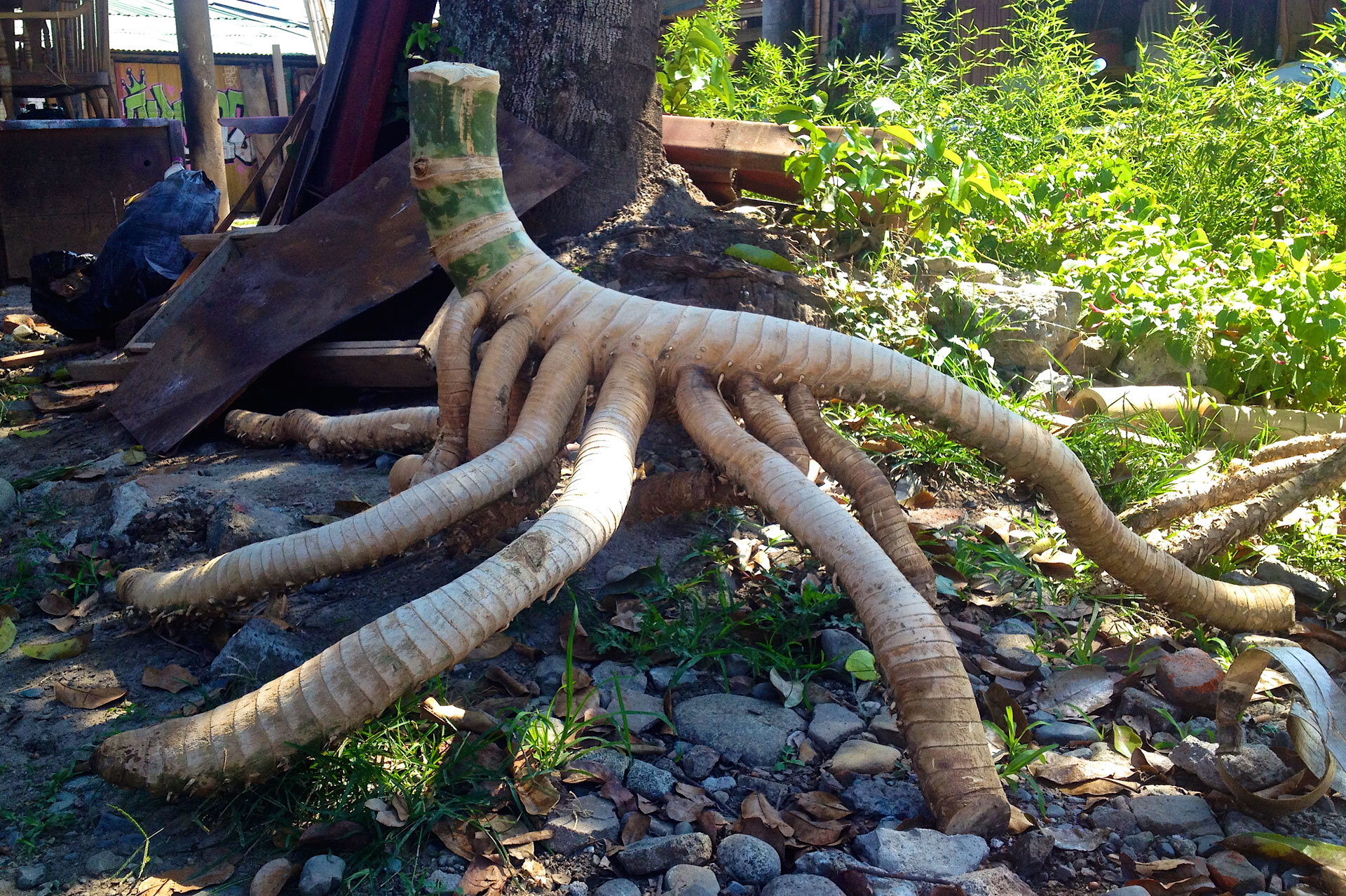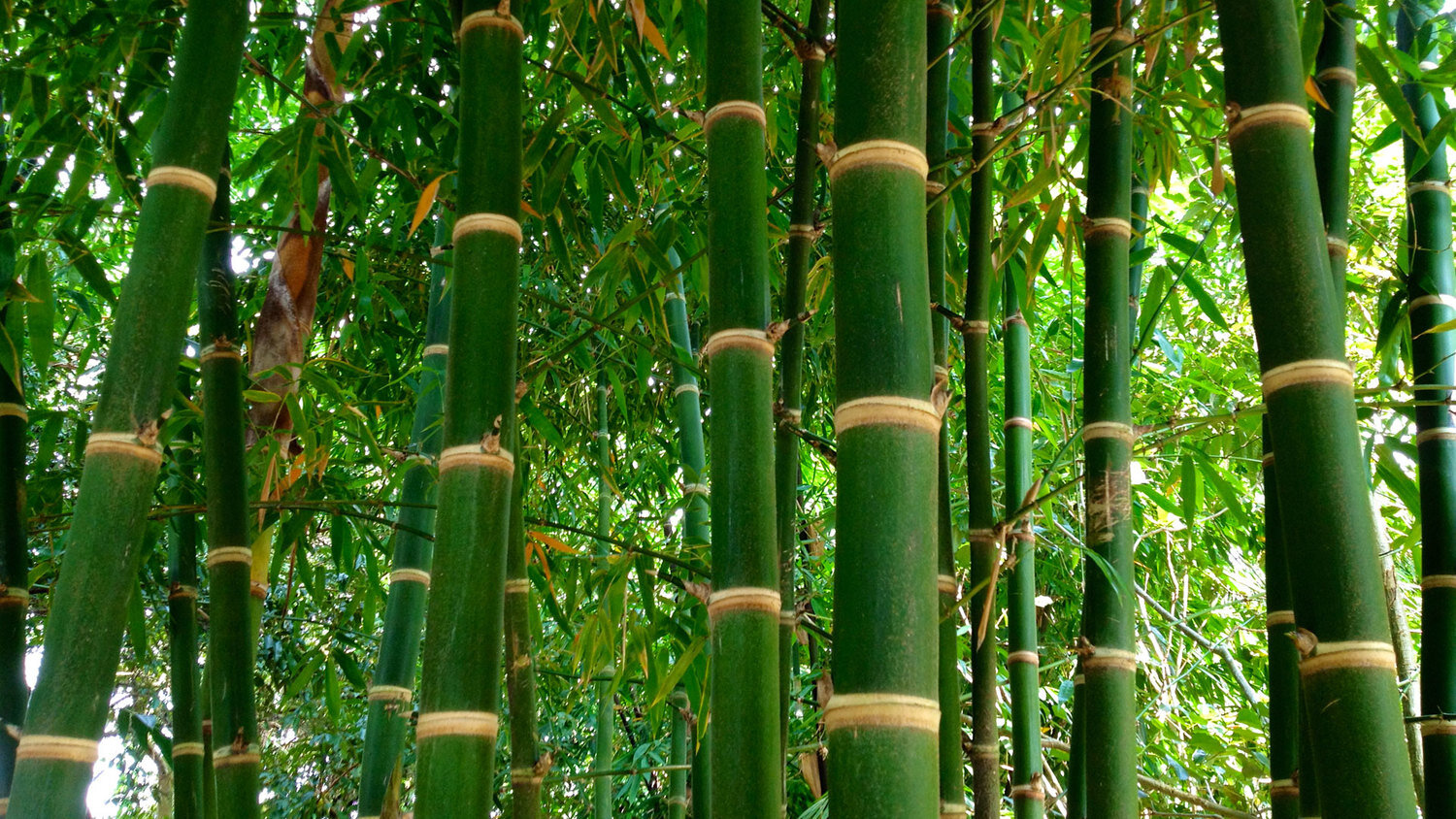Types of Bamboo Rhizomes
The bamboo rhizome is the underground part of a bamboo stem (culm). However, rhizomes are not roots, roots grow under the rhizome and culms erect on top of the rhizome. Axillary buds on the rhizome can produce new rhizomes, or bamboo shoots which grow into culms. Just like the culm, rhizomes have nodes and internodes. There are basically 3 types of bamboo rhizomes:
Monopodial (Running Bamboo)
Monopodial bamboos or running bamboos, have thin rhizomes which extend horizontally underground for long distances. Degenerated leaves and roots grow on the nodes of the rhizome, and there is one bud on every node. Some of the buds grow into new underground rhizomes, some grow into shoots and develop into stems. Bamboo stems of monopodial species grow in scattered state, and can spread over a large distance.
Sympodial (Clumping Bamboo)
There are 2 sub-types of sympodial bamboos; sympodial-tufted and sympodial-scattered bamboos.
Sympodial-tufted bamboos or clumping bamboos, have axillary buds on the stem base which develop directly into shoots and then grow into new stems. In the next year axillary buds on the stem base of new stems develop into new shoots and grow into new bamboo stems again, thus the propagation cycle is repeated and an underground rhizome system of mother bamboo and new stems is formed. Such underground rhizome system cannot extend for a long distance.
The length of stem petioles (the stalk by which a leaf is attached to a stem) with sympodial bamboos is different. Some of them are short (sympodial-tufted) and grow new stems from these petioles closely. Others like the sympodial-scattered bamboos almost resemble monopodial growth habits.
Sympodial-scattered bamboos, or open clumpers have longer petioles, which form false rhizomes. These can easily extend into distances of 50 - 100 cm. That's why new culms from these bamboo species grow in a scattered pattern. Guadua angustifolia is a perfect example of an open clumper.
Mixpodial
Finally to make it even more complicated there is the mixpodial rhizome type. These bamboos have axillary buds on the stem base of the mother bamboo which develop into rhizomes and extends horizontally underground. The axillary buds on rhizome nodes develop into new stems in scattered state. Meanwhile axillary buds on these new stem bases develop into shoots and form a dense bamboo brush. Such underground rhizomes incorporating the features of both monopodial and sympodial types are called mixpodial, or mixed brush.
Underground rhizome structures are the main indicator for taxonomic identification of bamboo species. This means the type of rhizome of every bamboo species is fixed, and determines the distribution of bamboo stems above ground.
Source: American Bamboos




